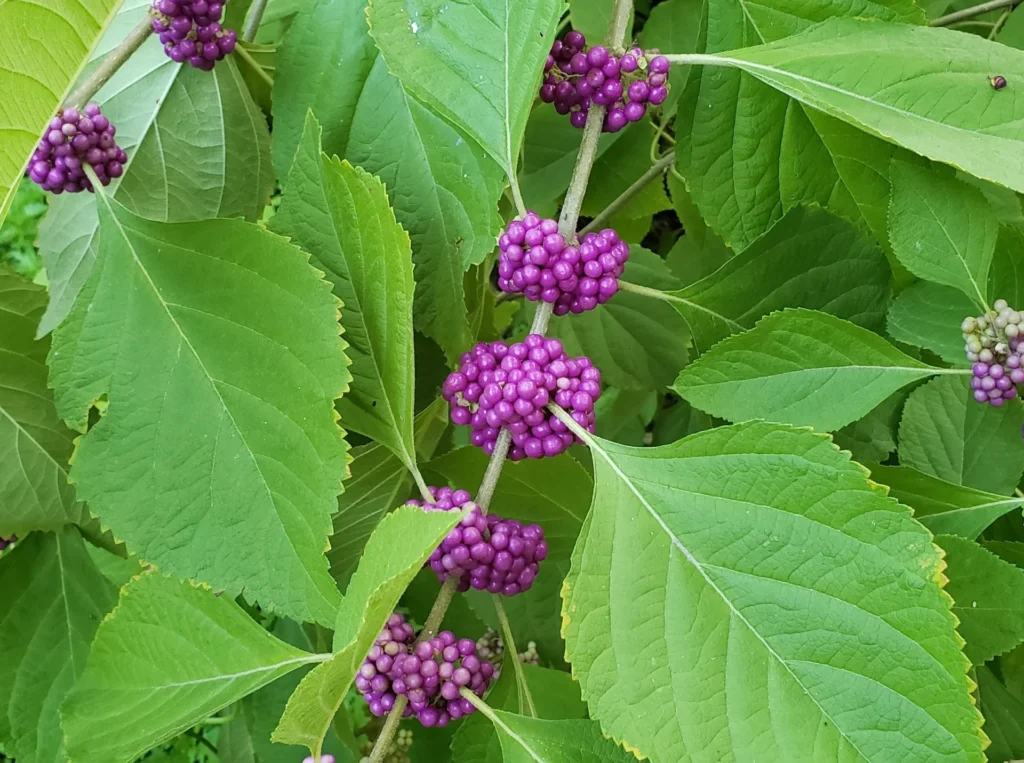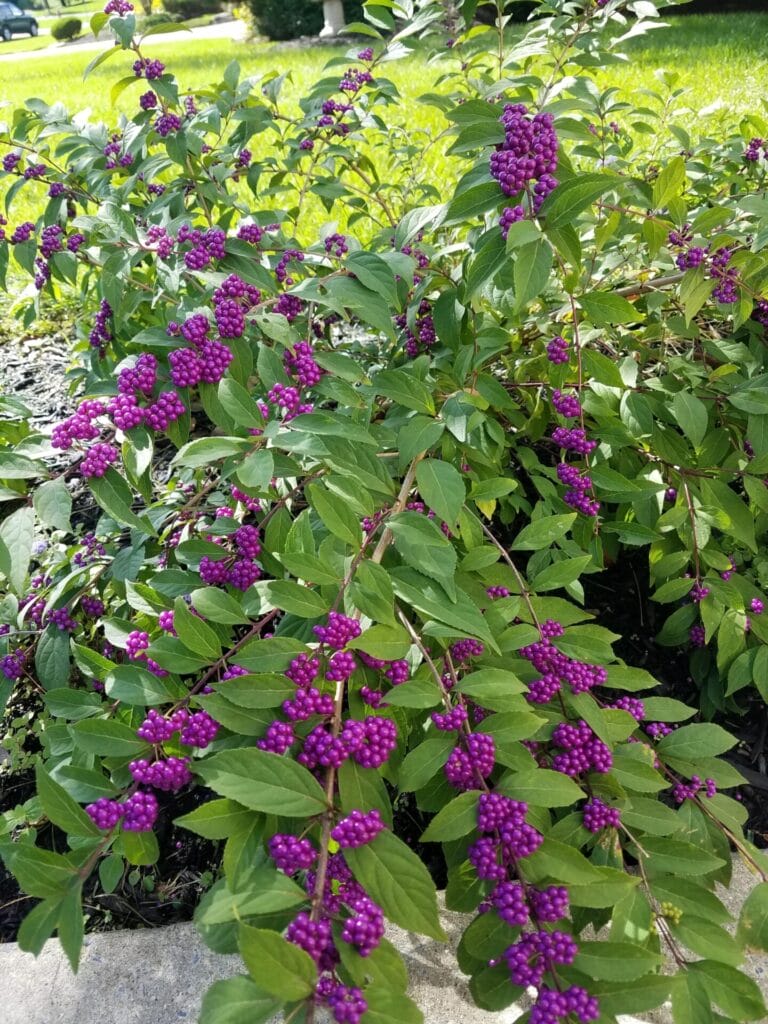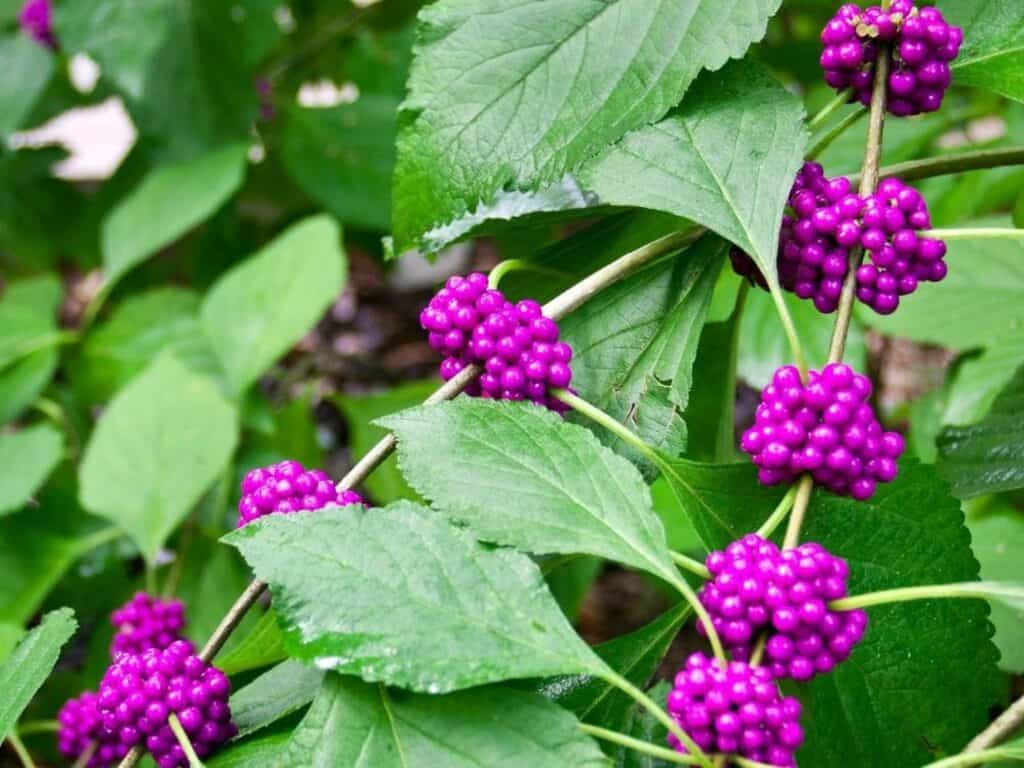Landscaping Ideas
American Beautyberry
By Innovation Grounds
American Beautyberry (Callicarpa americana) is a deciduous shrub native to the southeastern United States, particularly in areas with moist, well-drained soils like forests, woodlands, and thickets.
Habitat & Growing Conditions
- Climate: Thrives in USDA hardiness zones 6–11, making it adaptable to many parts of the southeastern U.S. and warmer areas of the country.
- Light Requirements: Prefers full sun to partial shade. However, it can tolerate some shade, though it may not produce as many berries.
- Soil: Well-drained, moist soils are ideal. The shrub is somewhat drought-tolerant once established but grows best in consistently moist conditions.
- Watering: Regular watering is needed during dry periods, especially when young. Established plants are somewhat drought-tolerant.

Uses
- Ornamental: The American Beautyberry is often planted for its striking appearance, especially in late summer and fall when the berries are most vibrant. It can be used as a hedge, border plant, or even a specimen plant in the landscape.
- Edible Uses: While the berries are sour, they can be used in making jellies, jams, and wines. Native American tribes traditionally used them for medicinal purposes, as well as for making a natural insect repellent.
- Medicinal Uses: The leaves and stems have been used in traditional medicine, notably for their anti-inflammatory and insect-repellent properties. Extracts from the plant have been researched for their potential antiviral and antimicrobial effects.

Care and Maintenance
- Pruning: Beautyberry is a relatively low-maintenance plant, but it can benefit from pruning in late winter or early spring to remove any dead or damaged growth. It can also be pruned to shape if necessary.
- Fertilization: It doesn’t require heavy fertilization. A balanced, slow-release fertilizer in early spring can encourage healthy growth and fruit production.
- Pests & Diseases: Generally pest-resistant, but it may occasionally attract aphids or scale insects. Disease issues are rare but could include fungal infections in overly wet conditions.

Interesting Facts
- The berries’ striking color is a result of anthocyanin pigments, and this coloration tends to increase in intensity as the fruit ripens.
- The plant gets its name from the “beauty” of its colorful fruit, which stands out against the surrounding foliage in fall.
- In addition to its ecological value, it is sometimes used as a landscape plant for erosion control due to its root system.


